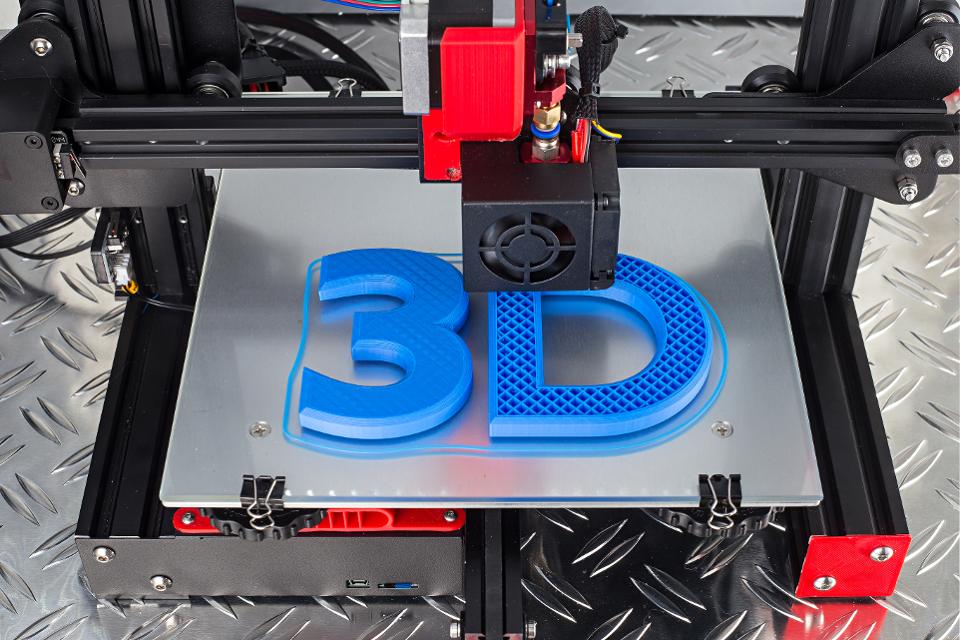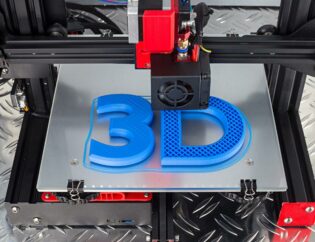
In 3D printing, achieving high-quality prints is a combination of several factors, including the type of filament used, the printer settings, and the cooling system. One of the most crucial components in this process is the part cooling blower. A well-chosen part cooling blower can significantly enhance the quality of your prints by ensuring proper cooling of the filament as it is extruded. This comprehensive guide will explore the best part cooling blowers for 3D printing services in India, their importance, and how to choose the right one for your needs.
Understanding the Importance of Part Cooling Blowers
Part cooling blowers play a vital role in the 3D printing services. They are responsible for cooling the filament as it is extruded from the nozzle, which helps in solidifying the material quickly and maintaining the desired shape. Proper cooling is essential for several reasons:
-
Improved Print Quality: Adequate cooling ensures that the layers adhere properly, reducing issues like warping, stringing, and sagging. It also helps in achieving finer details and smoother surfaces.
-
Strength and Durability: Proper cooling enhances the mechanical properties of the printed object, making it stronger and more durable.
-
Overhangs and Bridges: Cooling is crucial for printing overhangs and bridges, as it prevents the filament from drooping and maintains the structural integrity of the print.
-
Material Compatibility: Different materials have varying cooling requirements. A good part cooling blower can help in printing a wide range of materials, including PLA, ABS, PETG, and more.
Types of Part Cooling Blowers
There are several types of part cooling blowers available for online 3D printing India, each with its own advantages and disadvantages. The most common types include:
-
Radial Blowers (Centrifugal Fans): These blowers are known for their high airflow and pressure, making them ideal for cooling large areas. They are commonly used in desktop 3D printers.
-
Axial Fans: Axial fans are smaller and more compact, making them suitable for targeted cooling. They are often used in conjunction with ducting systems to direct airflow precisely where it is needed.
-
Turbine Blowers: Turbine blowers provide high airflow and pressure, similar to radial blowers, but with a more focused airflow. They are ideal for cooling specific areas of the print.
Top Part Cooling Blowers for 3D Printing
1. Noctua NF-A4x10 FLX
The Noctua NF-A4x10 FLX is a high-quality axial fan known for its exceptional performance and low noise levels. It is widely used in 3D printing Bangalore for its reliability and efficiency.
Features:
- Size: 40x40x10 mm
- Airflow: 8.2 m³/h
- Noise Level: 17.9 dB(A)
- Speed: 4500 RPM
Pros:
- Quiet operation
- High-quality construction
- Excellent airflow for its size
- Long lifespan
- Anti-vibration pads for reduced noise and vibration
- Includes Low-Noise Adaptor (L.N.A.) for even quieter operation
Cons:
- Higher cost compared to other fans
- Limited to smaller cooling areas
2. Sunon MF50151VX-B00U-A99
The Sunon MF50151VX-B00U-A99 is a radial blower known for its high airflow and pressure in 3D Printing services, making it ideal for cooling large areas of the print.
Features:
- Size: 50x50x15 mm
- Airflow: 9.3 CFM
- Noise Level: 32.5 dB(A)
- Speed: 6500 RPM
Pros:
- High airflow and pressure
- Reliable performance
- Suitable for large cooling areas
- Durable construction
- High static pressure, ideal for directing airflow through ducts
Cons:
- Noisier compared to axial fans
- Larger size may not fit all printers
- Requires proper mounting to avoid vibration
3. Delta BFB0512HH
The Delta BFB0512HH is a powerful radial blower known for its high performance and durability when 3D Printing in Bangalore. It is commonly used in industrial 3D printers.
Features:
- Size: 50x50x15 mm
- Airflow: 10.5 CFM
- Noise Level: 45 dB(A)
- Speed: 7000 RPM
Pros:
- High airflow and pressure
- Durable and reliable
- Suitable for demanding applications
- High static pressure, excellent for cooling intricate prints
- Robust construction for long-term use
Cons:
- Noisy operation
- Higher power consumption
- May require additional cooling for the blower itself
4. WINSINN 50mm Blower Fan
The WINSINN 50mm Blower Fan is a popular choice among 3D printing enthusiasts for its affordability and performance. It is a radial blower that provides good airflow and pressure.
Features:
- Size: 50x50x15 mm
- Airflow: 8.5 CFM
- Noise Level: 35 dB(A)
- Speed: 6000 RPM
Pros:
- Affordable price
- Decent airflow and pressure
- Easy to install
- Comes with a variety of mounting options
- Good balance between performance and noise
Cons:
- Moderate noise levels
- May not be as durable as premium brands
- Requires regular maintenance to ensure longevity
5. Gdstime 50mm Blower Fan
The Gdstime 50mm Blower Fan is another budget-friendly option that offers good performance for affordable 3D Printing services. It is a radial blower with a compact design.
Features:
- Size: 50x50x15 mm
- Airflow: 7.2 CFM
- Noise Level: 30 dB(A)
- Speed: 5000 RPM
Pros:
- Affordable price
- Compact and lightweight
- Decent performance
- Easy to replace and install
- Suitable for hobbyist and entry-level printers
Cons:
- Moderate noise levels
- Limited lifespan
- May require additional cooling for high-demand prints
6. E3D High Precision Radial Fan
The E3D High Precision Radial Fan is designed specifically for 3D printing service in Bangalore. It provides high airflow and pressure, making it ideal for cooling intricate prints.
Features:
- Size: 50x50x15 mm
- Airflow: 9.5 CFM
- Noise Level: 33 dB(A)
- Speed: 6200 RPM
Pros:
- High precision cooling
- Reliable performance
- Designed for 3D printing
- High static pressure for effective cooling of detailed prints
- Compatible with E3D hotends and other components
Cons:
- Higher cost
- Noisy operation
- Requires proper mounting to avoid vibration
7. 5015 Blower Fan
The 5015 Blower Fan is a versatile and widely used radial blower in the 3D printing companies. It offers a good balance of performance and affordability.
Features:
- Size: 50x50x15 mm
- Airflow: 6.5-8.5 CFM (varies by manufacturer)
- Noise Level: 30-40 dB(A) (varies by manufacturer)
- Speed: 4500-6000 RPM (varies by manufacturer)
Pros:
- Widely available and affordable
- Decent airflow and pressure
- Easy to install and replace
- Compatible with many 3D printers
- Good balance of performance and noise
Cons:
- Quality can vary by manufacturer
- Moderate noise levels
- May require regular maintenance
8. Mechatronics G5015X24B-RSR
The Mechatronics G5015X24B-RSR is a high-performance radial blower known for its reliability and efficiency. It is suitable for both hobbyist and professional 3D printing applications for best 3D Print online.
Features:
- Size: 50x50x15 mm
- Airflow: 9.2 CFM
- Noise Level: 35 dB(A)
- Speed: 6000 RPM
Pros:
- High airflow and pressure
- Reliable performance
- Durable construction
- Suitable for detailed and intricate prints
- Low noise operation for its performance level
Cons:
- Higher cost compared to budget options
- Requires proper mounting to avoid vibration
- May need additional cooling for high-demand prints
9. Sanyo Denki San Ace 40
The Sanyo Denki San Ace 40 is a high-quality axial fan known for its exceptional performance and durability. It is widely used in professional 3D printing services in chennai.
Features:
- Size: 40x40x20 mm
- Airflow: 10.6 m³/h
- Noise Level: 24 dB(A)
- Speed: 5000 RPM
Pros:
- High-quality construction
- Excellent airflow for its size
- Long lifespan
- Quiet operation
- Reliable performance
Cons:
- Higher cost compared to other fans
- Limited to smaller cooling areas
10. Orion OD5015-24HB
The Orion OD5015-24HB is a high-performance radial blower known for its reliability and efficiency. It is suitable for both hobbyist and professional 3D printing applications.
Features:
- Size: 50x50x15 mm
- Airflow: 8.0 CFM
- Noise Level: 32 dB(A)
- Speed: 5500 RPM
Pros:
- High airflow and pressure
- Reliable performance
- Durable construction
- Suitable for detailed and intricate prints
- Low noise operation for its performance level
Cons:
- Higher cost compared to budget options
- Requires proper mounting to avoid vibration
- May need additional cooling for high-demand prints
By expanding on the features, pros, and cons of each blower, you can make a more informed decision based on your specific needs and preferences. Whether you prioritize quiet operation, high airflow, or affordability, there is a part cooling blower that will suit your 3D printing requirements.
Our manufacturing experience can help you make decisions faster.
Choose one to get started
How to Choose the Right Part Cooling Blower for 3D Printing
Choosing the right part cooling blower for your 3D printer involves considering several factors, including the type of printer, the materials you use, and your specific printing needs. Here are some key considerations:
1. Airflow and Pressure
The airflow and pressure of the blower are critical factors that determine its cooling efficiency. Radial blowers typically provide higher airflow and pressure, making them suitable for cooling large areas. Axial fans, on the other hand, are better for targeted cooling.
2. Noise Levels
Noise levels can be a significant concern, especially if you are printing in a shared or quiet environment. Axial fans are generally quieter than radial blowers. Look for blowers with noise levels below 30 dB(A) for quieter operation.
3. Size and Compatibility
Ensure that the blower you choose fits your 3D printer. Check the dimensions and mounting options to ensure compatibility. Some blowers may require additional ducting or modifications to fit properly.
4. Durability and Lifespan
Investing in a high-quality blower can save you money in the long run. Look for blowers with a long lifespan and durable construction. Brands like Noctua and Delta are known for their reliability and longevity.
5. Cost
While it's tempting to go for the cheapest option, it's essential to balance cost with performance and durability. Higher-end blowers may cost more upfront but can provide better performance and last longer.
6. Material Compatibility
Different materials have varying cooling requirements. For example, PLA benefits from active cooling, while ABS requires less cooling to prevent warping. Ensure that the blower you choose can handle the materials you frequently use.
Installation and Maintenance Tips
Proper installation and maintenance of your part cooling blower are crucial for optimal performance and longevity. Here are some tips:
Installation
-
Check Compatibility: Ensure that the blower is compatible with your 3D printer's mounting system. Some blowers may require custom mounts or adapters.
-
Positioning: Position the blower to direct airflow precisely at the print area. Use ducting if necessary to achieve targeted cooling.
-
Wiring: Follow the manufacturer's instructions for wiring the blower to your printer's control board. Ensure secure connections to prevent electrical issues.
- Testing: After installation, test the blower to ensure it is functioning correctly. Check for proper airflow and listen for any unusual noises.
Maintenance
-
Regular Cleaning: Dust and debris can accumulate in the blower, reducing its efficiency. Clean the blower regularly using compressed air or a soft brush.
-
Lubrication: Some blowers may require periodic lubrication to maintain smooth operation. Follow the manufacturer's recommendations for lubrication.
-
Inspect for Wear: Regularly inspect the blower for signs of wear or damage. Replace worn or damaged parts promptly to prevent further issues.
-
Firmware Updates: Keep your printer's firmware up to date to ensure compatibility with the blower and optimize performance.
Conclusion
Choosing the best part cooling blower for your 3D printer can significantly enhance the quality of your prints. By understanding the different types of blowers, their features, and how to choose the right one for your needs, you can achieve better print quality, improved strength, and more reliable performance. Whether you are a hobbyist or a professional, investing in a high-quality part cooling blower is a worthwhile decision that can take your 3D printing projects to the next level.


